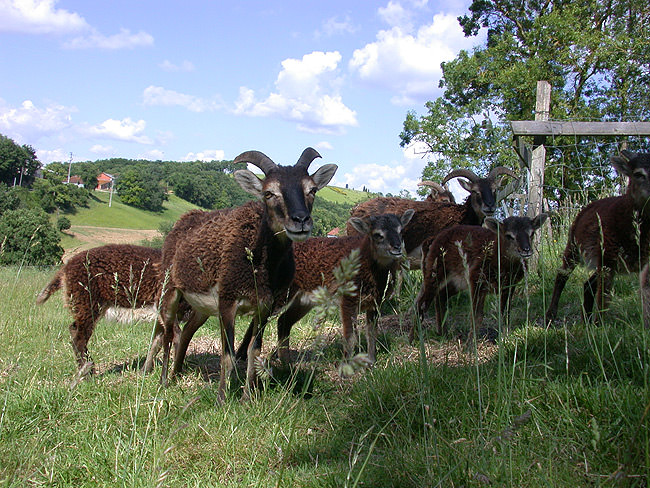Our corner of the Gers is wonderfully hilly and we’re lucky to have a steeply-sloped 2 hectare (5 acre) field behind the house which is just too steep for a tractor. It’s ideal for sheep and inside the 800 metres of fencing that we’ve surrounded the field with we keep Soay (pronounced ‘sow’ – ‘ay’) sheep.
You can read all about Soays at the Soay Sheep Society’s website, and we can vouch for what they say being pretty much the case.
”Oh, you keep goats,” most people say, which leads on to a gentle correction and the story of why we chose Soays rather than any other breed of sheep. The field needs to be kept reasonably free of brambles – and the grass kept down as much as possible – and we never fancied the Little Bo Peep routine that seems to be the requirement with other sheep – night vigils during lambing, annual shearing and so on.
Soays were the main sheep breed on a number of Scottish islands. When some of these islands were abandoned, their populations being deemed no longer viable, the sheep remained. As time went by, occasional returning islanders noted that the sheep seemed to be managing well without human intervention. Thus they developed a reputation for being a largely self-sufficient breed and, apart from the required standard of veterinary supervision, that’s how we find them – no shearing (they manage the summer moult themselves), and no intervention at lambing.
Beyond that, they are splendid, hardy animals that are a complete joy to look after. They are, apparently, the most primitive breed of sheep with a history going back to the Bronze Age. Easy to imagine that they might be contented with their lot, which is the sort of impression they give.

